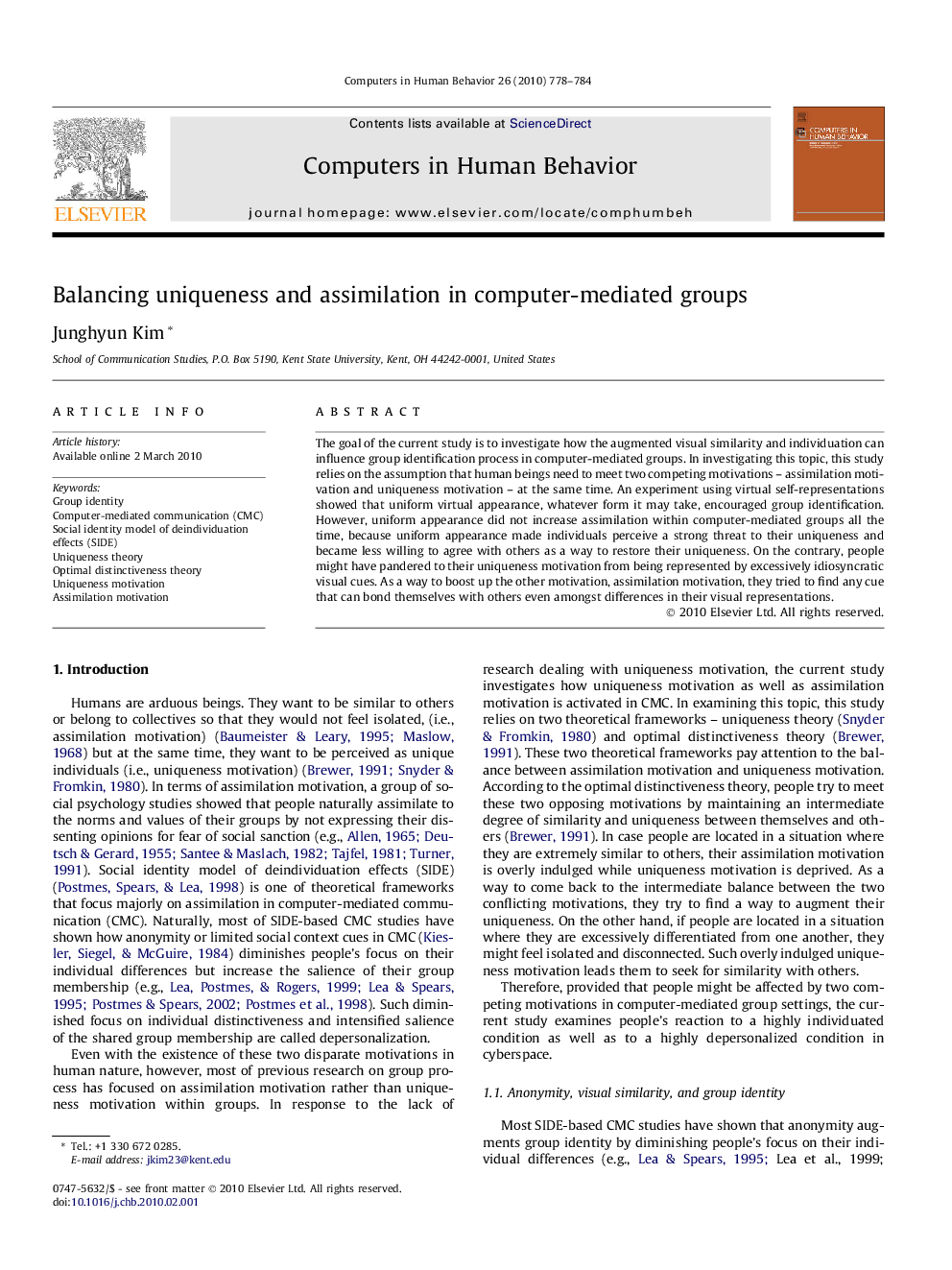| Article ID | Journal | Published Year | Pages | File Type |
|---|---|---|---|---|
| 352004 | Computers in Human Behavior | 2010 | 7 Pages |
The goal of the current study is to investigate how the augmented visual similarity and individuation can influence group identification process in computer-mediated groups. In investigating this topic, this study relies on the assumption that human beings need to meet two competing motivations – assimilation motivation and uniqueness motivation – at the same time. An experiment using virtual self-representations showed that uniform virtual appearance, whatever form it may take, encouraged group identification. However, uniform appearance did not increase assimilation within computer-mediated groups all the time, because uniform appearance made individuals perceive a strong threat to their uniqueness and became less willing to agree with others as a way to restore their uniqueness. On the contrary, people might have pandered to their uniqueness motivation from being represented by excessively idiosyncratic visual cues. As a way to boost up the other motivation, assimilation motivation, they tried to find any cue that can bond themselves with others even amongst differences in their visual representations.
